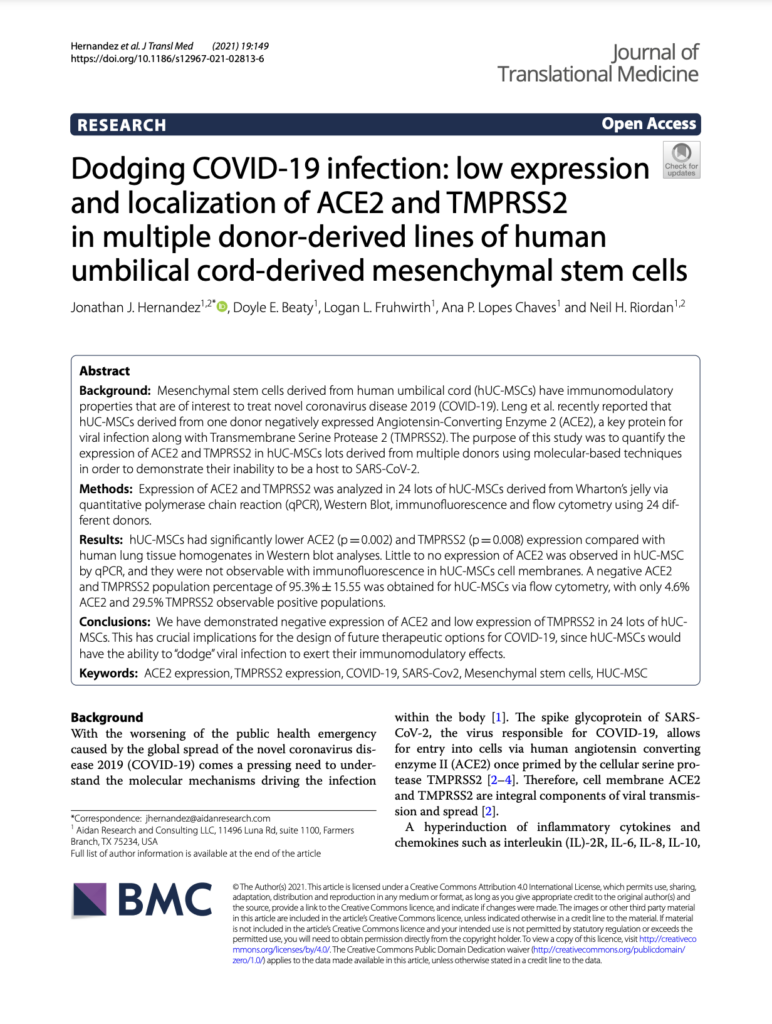July 1905
Dodging COVID-19 infection: low expression and localization of ACE2 and TMPRSS2 in multiple donor-derived lines of human umbilical cord-derived mesenchymal stem cells
Journal Citation
J Transl Med 19, 149 (2021)
Authors
Hernandez JJ, Beaty DE, Fruhwirth LL, Lopes Chaves AP, Riordan NH.
Abstract
Background: Mesenchymal stem cells derived from human umbilical cord (hUC-MSCs) have immunomodulatory properties that are of interest to treat novel coronavirus disease 2019 (COVID-19). Leng et al. recently reported that hUC-MSCs derived from one donor negatively expressed Angiotensin-Converting Enzyme 2 (ACE2), a key protein for viral infection along with Transmembrane Serine Protease 2 (TMPRSS2). The purpose of this study was to quantify the expression of ACE2 and TMPRSS2 in hUC-MSCs lots derived from multiple donors using molecular-based techniques in order to demonstrate their inability to be a host to SARS-CoV-2. Methods: Expression of ACE2 and TMPRSS2 was analyzed in 24 lots of hUC-MSCs derived from Wharton’s jelly via quantitative polymerase chain reaction (qPCR), Western Blot, immunofluorescence and flow cytometry using 24 different donors. Results: hUC-MSCs had significantly lower ACE2 (p = 0.002) and TMPRSS2 (p = 0.008) expression compared with human lung tissue homogenates in Western blot analyses. Little to no expression of ACE2 was observed in hUC-MSC by qPCR, and they were not observable with immunofluorescence in hUC-MSCs cell membranes. A negative ACE2 and TMPRSS2 population percentage of 95.3% ± 15.55 was obtained for hUC-MSCs via flow cytometry, with only 4.6% ACE2 and 29.5% TMPRSS2 observable positive populations. Conclusions: We have demonstrated negative expression of ACE2 and low expression of TMPRSS2 in 24 lots of hUC-MSCs. This has crucial implications for the design of future therapeutic options for COVID-19, since hUC-MSCs would have the ability to “dodge” viral infection to exert their immunomodulatory effects.

